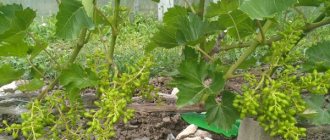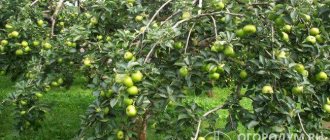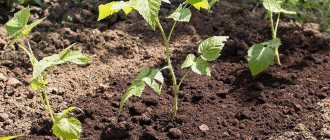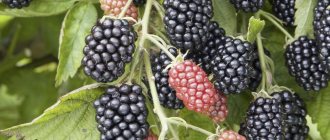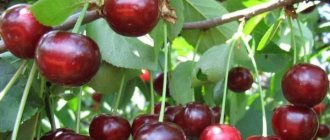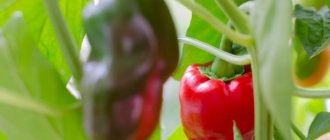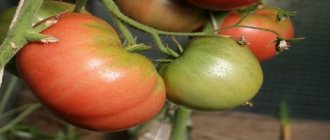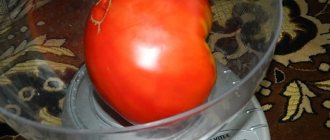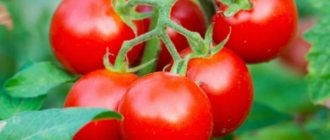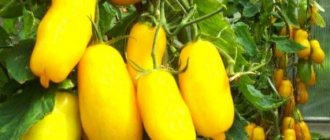Pygmy is a frost-resistant variety of black currant that produces a rich harvest. The plant is famous for its beneficial properties, the bush is unpretentious in care, currants with strong immunity, and belongs to the early species.
Blackcurrant Pygmy
the advantages of the Pygmy variety have made it one of the most beloved and widespread among our gardeners in the country
“Pygmy” currant berries showed an average weight of 2 grams during variety testing, but in practice they grow at 6 grams, and individual ones up to 8 grams
Description of the black currant variety Pygmy
Pygmy is a mid-ripening currant. The plant reaches a height of two meters. In addition to its impressive height, currants have overall dimensions. The branches are wide, the foliage is of medium quantity. In the first year of its existence, the plant has pink shoots without special pubescence.
The leaves are dark in color, large, and have a glossy green leaf. At the base of the leaf there is a small notch in the form of a circle or triangle. The side plates look to the sides, the central vein is at right angles to the base of the leaf. It has straight teeth.
The flowers are small and light in color. You can count up to 10 berries on one brush. The fruits are elastic, the weight of one is from 2.5 to 6 g. The surface is shiny, rich black, the skin is not thick. The pulp contains a small amount of seeds, the berries are sweet.
Drought and frost resistance
Experienced gardeners claim that the currant variety can take root in any climate zone. The bush can easily withstand drought, scorching sun and too rainy days. This does not harm the crop. The bushes survive even on frosty days. The maximum temperature that the bush can withstand is up to 35 degrees below zero. This feature made it possible for gardeners to grow the plant in Siberia, the Urals and the Far East.
Ripening period and yield
The variety belongs to large species. It is possible to collect about 6 kilograms of berries from one plant, which indicates the high yield of Pygmy. During an unfavorable year, indicators are halved. When growing a species for industrial purposes per square meter. m accounts for 2.5 kg of berries. Currants are in the middle ripening period; the berries take a long time to ripen.
An overripe fruit loses important vitamins and minerals, and the taste becomes less pronounced. Berries should be picked on time.
Reviews from gardeners indicate that Pygmy fruits do not contain the sourness characteristic of the plant. The fruits are tasty, juicy and sweet. Sugar appears with enough sun and heat. The Pygmy tasters' rating is high. When fully ripe, the fruits do not fall off the plant.
For a review of the Pygmy blackcurrant, watch the video below:
Transportability
The Pygmy blackcurrant harvest can be stored for about one month. The main thing is to create the proper conditions for this - a temperature of about +14 degrees Celsius. The transportability of the variety is not bad, the berries are dense, the skin does not allow them to burst during movement. However, attention should be paid to the containers in which the currants will be moved. Boxes must be secure and completely sealed.
Usage
Pygmy fruits are used to prepare various preserves. The fruits can be used fresh. Due to its natural sweetness, no additional sugar is required.
At home, currants are stored for about three days, so that the fruits last longer; they are frozen, dried or canned. They are stored in this form for about six months.
Productivity
Currants of the “Pygmy” variety do not need any special pollinators, or a long, long “rest”, maintaining annual fruiting.
At the same time, experienced gardeners note that “Pygmy” currants should be placed next to bushes of other varieties. Bushes of the “Treasure”, “Yadrenaya”, “Bagira”, or “Luchia” varieties planted in the same row with it will influence the yield in the most positive way.
The Pygmy variety shows an average yield of 6.4 t/ha. The maximum yield can reach 22.8 t/ha, or 1.6-5.7 kilos per bush.
“Pygmy” is a winter-hardy and self-fertile variety, resistant to powdery mildew and anthracnose. It tolerates low temperatures well and takes root well in the harsh climatic conditions of the Urals, Siberia and the Far East.
At the same time, it retains the main characteristic of the berry crop - high yield. All together makes the variety one of the most popular in the regions of Russia located in the north and beyond the Urals.
Advantages and disadvantages of the variety
Why do owners of their own plots love Pygmies so much?
Advantages of the variety:
- Appearance and taste of fruits. The bush produces berries every year; the currants do not become smaller over time.
- Immunity to natural vagaries. Currants can withstand drought, heat, heavy rains and cold winters without damaging the harvest.
- Strong immunity. The shrub is resistant to many fungal diseases. Gardeners growing Pygmy do not know what anthracnose and powdery mildew are.
- Self-pollination. Pollinator varieties will help Pygmy increase productivity, but the plant copes well without them.
- The versatility of berries and benefits for the body. Currants are eaten fresh and can often be preserved. The variety contains a large number of macroelements and microelements. Almost all vitamins are retained in berries even after prolonged heat treatment.
- Elementary care. Knowing simple methods for caring for currants will be enough for you. Even a novice gardener can grow a Pygmy.
Disadvantages of Pygmy currant:
- Weak immunity to septoria. It is necessary to carry out preventive measures regularly.
- The bush can be eaten by a currant mite.
History of the variety
Pygmy currant was obtained at the end of the 20th century by V.S. Ilyin at the South Ural Research Institute of Horticulture and Potato Growing by crossing the Bredtorp and Seyanets Golubki varieties. In 1999, it was entered into the State Register with regional admission for the Volga-Vyatka, Ural, West Siberian (Novosibirsk region, Tyumen), East Siberian (Trans-Baikal Territory, Krasnoyarsk Territory, Yakutia), Far Eastern (Sakhalin, Khabarovsk, Magadan, Kamchatka, Amur region) districts.
The black currant variety Pygmy was bred at the end of the last century, and has since been popular among gardeners
Growing
It is not difficult to grow Pygmies in the garden; you need to know the basic rules. Be careful and careful, because the fruiting of the plant will depend on the correctness of your actions. Pygmy bushes require regular watering and care.
Selection of seedlings
Before purchasing a seedling, pay attention to these indicators:
- Age. To plant in open soil, the seedling must be one or two years old.
- Root system. Elastic, without rot and damaged lobes.
- Branching. The thicker the plant, the faster it will take root and the better it will develop.
- Sapling height. No more than 30 cm.
- Lack of greenery.
Buy seedlings for planting in special stores; do not trust market sellers. It's easy to change the variety.
Prepare a stimulating mixture and place blackcurrant seedlings in it for two days. Thanks to this procedure, the cutting will take root in the soil faster. To get rid of pests and diseases, add potassium permanganate to the stimulating solution, and treat it with a clay mash a couple of hours before planting the plant.
Boarding time
The optimal planting time is the autumn season. The best period is the last days of September or the beginning of October. The cuttings have time to take root in the soil before the first frost. It is necessary to adjust so that there are about 4 weeks left before the cold weather. Depending on the climate, currant flowering lasts 40 days. Planting in spring begins early, after warming. The main thing is to cope before the sap flow begins.
Soil preparation
Pygmy currant is not demanding on lighting. It is desirable that the area receives a lot of sunlight and heat, but in shady areas the plant also grows and develops well. Choose a place with little wind. Air currents will help the plant cope with fungal diseases faster, and the wind will also dry the soil from melting snow.
The bush can withstand large amounts of moisture, but should not be planted close to groundwater. The plant will not grow and develop in such conditions. An excellent way to grow Pygmy is in heavy loamy and slightly acidic soils. The taste of the berries directly depends on the choice of site for planting the bush.
Planting scheme
Main stages of planting:
- Prepare a hole (dimensions: 50x50 cm, depth 60 cm). The favorable distance between bushes is 1.2 m.
- Place the bush in the hole and straighten the root system.
- The seedling should be in the hole at an angle. Keep the Pygmy in this position and cover it with soil.
- The lower buds may be under the soil. About 4 buds should remain on the surface.
- Compact the top layer of soil.
- Water the bush.
- If the soil has been fertilized in advance, there is no need to add additional minerals.
Features of the spring planting of Pygmy
Buying a seedling requires attention. Choose annual or biennial plants with intact, moistened roots. Already branched seedlings have an advantage. Weak annual seedlings are often planted two per hole, tilted in different directions, to form a strong bush later.
Planting is possible in the spring, immediately after the thaw, in March - April, and in the fall. The buds must remain closed at the time of planting. Autumn planting in September - October is optimal. Planted 2 weeks before frost so that the plant has time to prepare for winter.
Pygmy currant does not tolerate wind; planting in a protected place is necessary. Wet soil is not suitable, although the plant tolerates temporary increases in groundwater levels in autumn and winter. Do not plant in acidic soils; pre-treatment with lime is necessary.
When planting a plant, you should dig holes in advance. A hole 40 cm deep is dug in 2 weeks; you can dig a trench for planting several plants. Dense planting is acceptable; Pygmy will grow 1-1.5 m from another seedling.
Fertilizers and soil are placed in the hole, superphosphate and humus are suitable. The seedling is lowered at an angle, leaving 5-8 cm underground. The roots must be placed freely, covered with soil, and then buried. Compact the soil, avoiding air pockets in the root area.
After planting, up to 10 liters of water are poured onto the plant, the soil is mulched using humus and peat. The mulching and watering procedure is repeated after 3 days. Long shoots are cut by a third, activating growth and tillering, enhancing vegetation, which leads to increased yield.
Perennial marigolds planting and care, growing from seeds: when to plant Chernobrivtsy in open ground, medicinal properties and photo tagetes
Features of care
The gardener will receive a rich and healthy harvest only if the currants have been properly cared for. Care consists of regular watering, protection from insects and diseases, proper pruning of branches and application of fertilizers.
Read our article on how to care for currant bushes in the autumn.
Tillage
The soil on which currants sprout and develop requires special care. Keep weeds away. Regularly cultivate the soil with a ripper, use a hoe or a cultivator. Loosening helps aerate the soil, it is saturated with oxygen. The treated soil quickly absorbs air, the root system develops better.
This procedure is especially necessary for heavy and clayey soil; it tends to become compacted and heavier. During loosening, the hoe cannot be deepened more than 4 cm, since the roots of the bush do not lie deep. The maximum deepening of the root system is 10 cm. A sharp blade of a garden tool can cause irreparable harm to the roots.
The root circle of the plant needs mulching. For this purpose, sawdust, humus, and fine tree bark are used. Natural material decomposes quickly and enriches the earth.
Watering
Pygmy is a drought-resistant black currant. But this fact does not mean that the bush does not require moisture. Drought causes severe damage during flowering; its deficiency provokes the shedding of most flower stalks. Black currants need infrequent but abundant watering. In summer, the bushes are watered approximately once every 14 days. The exception is severe drought.
One currant bush needs 3-5 buckets of water (30-50 l).
You can reduce the amount of watering by mulching; the natural material allows the soil to retain water in the soil longer. In the autumn season, often in October, strong moisture-charging irrigation is carried out. The bush is being prepared for winter. This activity is carried out after all the necessary fertilizers have been applied to the plant.
Top dressing
A tasty and healthy harvest is obtained only if black currants are fertilized correctly and regularly. A special place for shrubs of this type is occupied by fertilizers containing nitrogen. They strengthen branches, buds and leaves, promote their rapid development and growth. A healthy plant brings a rich harvest in the form of juicy and healthy berries.
Fertilizers can be organic and mineral. Let's consider several options for applying fertilizer to the Pygmy blackcurrant bush.
Feeding No. 1
It is carried out in the autumn (late September or early October). First of all, you need to prepare half a bucket of manure. It must be rotten, otherwise the currant root system will burn. Pour 20 g of superphosphate and 20 g of potassium sulfate on top of the litter. The soil is dug up in such a way that all the components of the fertilizing end up in the soil around the plant’s trunk.
Top dressing No. 2
The period of implementation is early spring, the buds should bloom, but the procedure is carried out before the bush blooms. In a bucket, mix two equal parts of chicken manure and water. Carefully combine the contents and leave in a sunny area until the fermentation process. After a week, the fertilizer can be used.
Required consistency: for 5 liters of water – 0.5 liters of concentrate. Stir the mixture and pour under the currant bush. Be sure to adhere to the indicated dosage. An overdose of chicken manure leads to a nitrogen burn, as a result of which the Pygmy's root system will die.
Top dressing No. 3
Use ammonium nitrate. This fertilizer is useful for young bushes; plants need it after flowering; more mature bushes need it during fruit set.
Sprinkle ammonium nitrate in a 20 cm layer in the Pygmy tree trunk circle. This amount of fertilizing is enough for 1 currant bush. After applying the fertilizer, loosen the soil; this will help the soil absorb the nitrate faster.
Top dressing No. 4
Don’t forget mineral fertilizers; they are applied annually to bushes that grow on heavy soils. Light and fertile soils need mineral fertilizers once every 3 years. The implementation period is the autumn season.
The mixture consists of: 30 g of potassium and 40 g of phosphorus. Mix the substances carefully and scatter them under the bush. Mix with soil during autumn digging.
If the currant is already more than 4 years old, then the number of components increases by 2 times. Pay special attention to acidity; if the indicator exceeds the norm, then add 500 g of lime per 1 square meter. m.
Trimming
Pruning helps reduce the amount of green mass on the bush. Thickening leads to a decrease in the number of berries. Pruning is carried out once a year. The time for implementation is spring until the buds swell. It is necessary to cut off all dead, thick and damaged branches during the winter, which clearly thicken the bush. If pruning is not carried out, the plant will begin to bear berries on last year's side branches. This phenomenon will lead to a large loss of currant yield.
How to prune depending on the year of the plant’s life:
- First year. Trim all branches on the seedling, leaving 3 buds, they will serve as the basis for the growth of first-order branches.
- Second year. Leave 4 strong branches on the grown bush; they will serve as the basis for second-order branches.
- Third year. Leave 3 strong one-year-old shoots and 5 two-year-old shoots.
- Fourth year. The green mass of the plant should remain with 4 branches from each year.
- Subsequent years. Carry out pruning so that about 20 branches of different ages remain on the bush. This technique will not allow the currants to thicken.
Pygmy black currant berry contains only 60 kcal per 100 g, so it can be consumed by anyone who eats right.
Basic rules for pruning shrubs:
- Remove old damaged branches; they should be more than 5 years old.
- Trim weak and diseased branches. This procedure is called sanitary.
- Eliminate all shoots whose growth points are directed towards the middle of the bush.
- Remove the lower branches that cannot support their own weight and are located on the ground.
Preparing for winter
The Pygmy blackcurrant bush is frost-resistant, but in some regions it should be hidden from strong and cold winters. To do this, gardeners build temporary barriers. Shields, fences and fences are great for protection. The tree trunk circle of the plant is insulated with a layer of mulch, which serves as excellent protection for the soil and root system of the Pygmy.
If desired, the currants can be wrapped using agrofibre. Such material will help protect the above-ground part of the plant. The insulation prevents cold winds from approaching the plant, but at the same time, it allows air to pass through, which is so necessary for currants to function normally.
Planting currant bushes
It is worth finding a good site for planting currants. This culture loves sunny, draft-free places. The soil must be fertilized, soft, slightly acidic, with a groundwater level of at least 1 meter. Pygmy currants can be planted in spring (when the soil warms up to +10 degrees) or in autumn. In the latter case, it is worth doing this 3 weeks before persistent frosts.
Annual seedlings are usually planted - they take root best. But they take only those bushes whose height is already 35 cm or more. The ground part of the bush must be free of damage, growths, pests or diseases. The root system is also examined carefully. She must be healthy.
Annual seedlings are usually planted - they take root best
The site is prepared 2 weeks before planting. First, it is cleared of weeds, then a hole with a diameter and depth of about 60 cm is dug. Before planting, the roots of the seedling are soaked in Kornevin’s solution. The top layer of earth obtained by digging a hole is mixed in a large basin with a bucket of compost, 200 g of superphosphate and 60 g of potassium sulfide. After mixing, part of the resulting earthen mixture is poured into the hole in a heap. A seedling is placed on it and the roots are straightened. They should not bend, otherwise they may break when filling with soil. As soon as the roots are straightened, it is necessary to level the bush so that it stands level and begin to sprinkle the roots with soil.
After planting the bush, the soil needs to be compacted a little (not too much) and watered with water, spending 8 liters per bush. If possible, you can immediately mulch the root zone with peat, straw, sawdust or decorative mulch.
Harvesting
Shrubs of this variety bloom for about 40 days. The berries begin to ripen in mid-summer. Harvesting lasts approximately 1.5 months. In some regions it is 1 month, everything directly depends on the climate in which the plant grows.
From one bush you can harvest about 4-5 kg of crop. The black currant variety Pygmy is self-pollinating with regular yield. Maximum from one bush – 5 kg of harvest. The berries are nutritious when consumed and fresh. They make jam, jam and compotes. Currants do not lose their minerals and vitamins when frozen or dried. Fresh fruits can be stored in the refrigerator for up to one month.
Characteristics of currants
The characteristics of a variety can tell about all its advantages and disadvantages. Below are the qualities of Pygmy currants.
- The variety is self-fertile. It does not require pollinators to achieve maximum yield.
- Freshly picked berries that were picked from the bush 2-3 days before full ripening are most suitable for transportation.
Freshly picked berries are most suitable for transportation.
Protection from diseases and pests
The main signs of a disease in a plant are: yellow spots, dark leaf blades with tubercles, rotting branches and berries, white bloom and an unpleasant odor. If you find at least one such sign in Pygmy, you need to treat the bush with special fungicides. Insects are removed with your own hands or by chemical treatment.
Preventive actions against diseases and pests of black currant Pygmy:
- Thinning bushes, regular pruning of branches.
- Mulching the tree trunk soil and removing weeds.
- Garbage collection.
- Treatment of shrubs with folk remedies.
Reviews
Alexey, 27 years old, Bashkiria
I learned about the Pygmy variety in the late 90s. We made a lot of jam back then. We needed a currant that would grow anywhere, wouldn’t spoil, and wouldn’t require much. The pygmy turned out to be just like that. We eat jam and can’t get enough of it.
Sasha, 44 years old, Irkutsk
Nothing grows in our dacha, but here “Pygmy” started to grow. We constantly replant the bushes, and the harvest grows from year to year. The jam turns out great.
Reviews from gardeners about Pygmy currants
★★★★★
Daria, 41 years old, teacher, Kursk. The pygmy has been developing on my summer cottage for more than 3 years.
All family members are happy: the berries are large and juicy, the bush is relatively small, and does not require staking or special care. Very often I grind berries with sugar - the children are delighted with such a delicacy! ★★★★★
Olga, 60 years old, Omsk. Only this year the first harvest was harvested.
When buying currants, the seller at the market insisted that we take Pygmy, and we did not regret it! The berries are really tasty, but, unfortunately, there are not enough of them yet - we haven’t had a chance to eat enough. We hope that next year there will be more harvest. ★★★★★
Alexander, 58 years old, gardener, Vladimir. I have been growing currants in my own garden for a long time.
I would like to note that the Pygmy harvest is exactly as it is shown in pictures and described in reference books. Black currant Pygmy is an excellent choice for growing shrubs in the garden. With proper planting, the plant will please the owner for about 10 years, and with proper care, this period can double.
Hide
Add your review
0
0
Copy link
Pruning currant bushes
In early spring, all frozen, damaged branches should be removed.
In autumn, shoots that grow inside the bushes are removed and only thicken them. 2-3 summer branches are left, as they will form the next year's crop. Old shoots (over 5 years old) need to be cut out completely, because berries will no longer form on them.
An adult full-fledged shrub consists of 14-20 shoots of different ages. Pygmy currant bushes older than 8 years are cut off almost completely, leaving only a few 2-year-old shoots.
